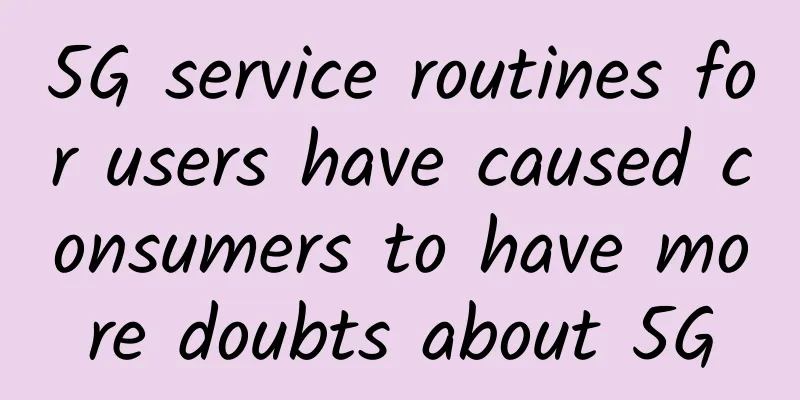SIM card swap attacks: an inevitable battle as 5G wave arrives

|
The infrastructure of mobile phone operators is under attack. Because of the epidemic, most people choose to work from home, and global data usage is soaring. What is more worth mentioning is that 5G products will be launched this year, and this new technology has given everyone more choices. But this year, for reasons known to everyone, the outbreak of COVID-19 has plunged the world into crisis, and the last thing we want is a major vulnerability in the Internet, because we are now more dependent on mobile phones than usual, both for personal use and business.
It is because of today’s situation that mobile devices have become the focus of hackers because it holds an individual and its multiple forms of identification, such as which applications the user uses, the time spent on the device, the location, and even the fingerprint that contains what features are running. Therefore, bad actors have begun to exploit this data, and SIM swap scams have increased by 220% since 2017. Scammers are good at collecting victim data through the following channels: for example, from phishing emails, or purchasing personal data from organized crime groups, or directly using social engineering vulnerabilities. Once the scammers have the necessary details, they contact the victim's mobile phone provider and, through social engineering techniques (such as calling and stating the victim's personal information), convince the phone company to link the victim's phone number to the scammer's own SIM card. For example, by impersonating a victim, claiming that they have lost their phone, and then requesting a new SIM card from the operator and activating it.
SIM swap fraud is an account takeover that typically targets weaknesses in two-factor authentication and two-step verification. At its core, the scam exploits the ability of mobile phone carriers to seamlessly move a phone number to a new SIM card. Such attacks are now common, and there are scams of this kind all over the world. Cybercriminals use them to steal credentials and intercept SMS messages to send OTPs (one-time passwords), and most importantly, their goal is to cause financial losses to the victims: The scammers trick the automated systems (because they have most of the victim's personal information); when they call the bank's live customer service, they pretend to be the victim and provide personal information. Even worse, they can use the hijacked phone number to access the victim's emails and files. Scammers target mobile phone numbers, so any phone number that has contact with the victim is a potential victim because they have an ideal mechanism for intrusion. Even though GDPR requires notification within 72 hours of discovering a breach, searching millions of records is unrealistic and what is needed is to reduce the number to a manageable size. Traditional security detection methods include firewalls and server logs to identify any unusual behavior. If the data is outside the company network, such as in the cloud or on a personal computer, it will be more difficult to detect if a data breach or theft has occurred, which means that uninformed employees will take longer to make a decision. Therefore, it is necessary to update the system in time and download reliable security software. If the SIM card swap has been identified, the security platform may check other marks, such as the SIM card identification change date. If the mobile operator can be contacted within a relatively short period of time after the data is stolen, the platform can extract the associated number and its corresponding records for a more in-depth investigation.
Such as the current location, to whom the data was transferred, and whether a third party (such as a bank) was involved. If these trends and targeted data change, remember to feedback the data to the investigation team in a timely manner. In the current environment, speed of investigation is crucial. Because the number of similar victims is huge and each is different, in the era of big data, doing things quickly without taking up a lot of data has become a huge challenge. It is recommended that operators automate the SIM card swap process for security reasons and have access to multiple data sets for inspection, which is crucial to reducing losses caused by data breaches and combating cybercrime; or banks establish unique security verification in the event of a data breach and do not actively pay the ransom. [Editor: Zhao Ningning TEL: (010) 68476606] |
>>: How to resolve the conflict between 5G intermediate frequency and satellite C band?
Recommend
Countdown to frequency clearance and network withdrawal: 2G/3G existing users face new problems
According to various sources, the conditions for ...
Report: Global 5G mobile data traffic is growing explosively
Mobile network operators promise their users that...
RackNerd June Promotion: 1.5G memory VPS annual payment starts at $15.78, multiple data centers in San Jose/Seattle, etc.
RackNerd released a promotional package for June,...
5G connectivity enables smart substations
[[423089]] Smart substations will be installed be...
IPv6 conversion service - rapid business support for IPv6 practice
What is IPv6 conversion service? IPv6 Translation...
SD-WAN vs. SASE? No!
The canonical definition of SASE includes five fu...
Amid the epidemic crisis, many countries are planning to break through with 5G
For the global 5G industry, the first quarter of ...
JustVPS: 30% off UK VPS/20% off all VPS, unlimited traffic in multiple data centers in the United States/France/Singapore/Russia/Hong Kong, China
JustVPS.pro bought a VPS in London, UK, last Dece...
The "Six Mountains" that Block Operator Innovation
The recent discussion about the advanced construc...
What impact will the Internet of Things have on corporate business?
Nowadays, whether people like it or not, the Inte...
The battle for 5G private networks has begun
This article is reprinted from the WeChat public ...
Regarding Route-Policy, this article explains it in detail and you will understand it after reading it once!
In the previous issue of "Route Policy"...
Dubbo3.0 Alibaba Large-Scale Practice Analysis—URL Reconstruction
1. Introduction to URL Before we discuss the spec...
Huawei's Hu Houkun: To promote the new development of 5G, the industry should prepare for the metaverse, 5GtoB and low-carbon development
On October 13, the 2021 Global Mobile Broadband F...
V5.NET: 20% off Hong Kong international servers, E3-1230/8GB/240G SSD/15M monthly payment starts from 340 yuan
V5.NET has launched a new promotion, currently of...









